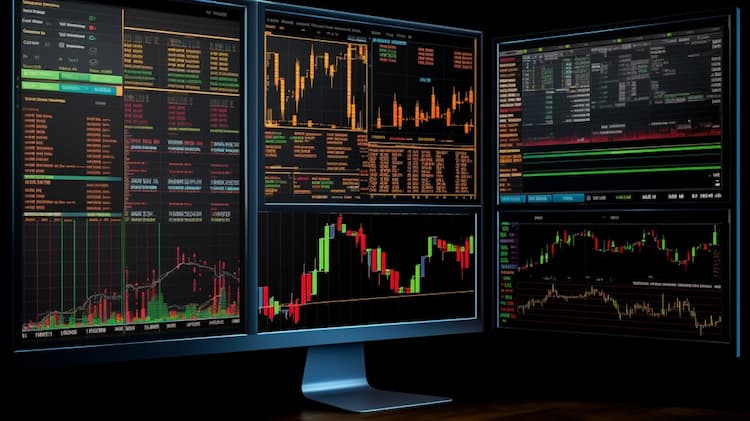
How does the DFIC ETF work?
The DFIC ETF is a specialized investment fund that focuses on a specific sector. This exchange-traded fund offers investors exposure to a range of companies in this sector.
The issuer of the International Core Equity 2 ETF (DFIC) adopts an integrated investment approach that encompasses research, portfolio design, portfolio management, and trading functions to achieve the ETF's investment objective. This approach emphasizes long-term drivers of expected returns, as identified by the advisor's research, while maintaining broad diversification across companies, sectors, and countries to mitigate risks effectively. DFIC focuses on investing in non-U.S. companies in developed markets, with a bias toward smaller capitalization, lower relative price, and higher profitability companies compared to their representation in the International Universe. The issuer's flexibility in managing the portfolio's exposure to different market factors and its active management distinguish DFIC from passively indexed ETFs.
The International Core Equity 2 ETF (DFIC) offers investors a unique approach to international equity investments. While dividends may not be the primary focus of this actively managed exchange-traded fund, DFIC seeks to generate income through its investment in a broad and diverse group of non-U.S. companies in developed markets. The dividend distribution of DFIC is influenced by the dividend policies and performance of these international companies. Investors can expect periodic dividend distributions, and the ETF may adjust its allocation to different companies and regions to optimize returns and manage risk. Additionally, DFIC may utilize various strategies, such as depositary receipts, futures contracts, options, and currency transactions, to enhance its income potential and achieve its investment objectives.
Tracking the International Core Equity 2 ETF involves an integrated investment approach that combines research, portfolio design, management, and trading. The fund aims to achieve its investment objective by purchasing a broad and diverse group of non-U.S. companies in developed markets. It emphasizes long-term drivers of expected returns while balancing risk through diversification across companies, sectors, and countries. The ETF's portfolio management and trading processes aim to strike a balance between long-term and shorter-term expected returns while managing trading costs. The fund may also use depositary receipts, futures contracts, options, and foreign currency transactions to optimize its market exposure and income generation. As an actively managed ETF, DFIC Tracking does not seek to replicate a specific index, potentially resulting in a higher portfolio turnover compared to index funds.
The correlation aspect of the International Core Equity 2 ETF (DFIC) is significant for investors looking to understand its behavior in relation to non-U.S. developed markets. DFIC employs an integrated investment approach that emphasizes long-term drivers of expected returns while maintaining broad diversification across companies, sectors, and countries. The fund aims to purchase a diverse group of securities, with increased exposure to smaller capitalization, lower relative price, and higher profitability companies in the International Universe. To study and analyze DFIC's correlations with various asset classes and sectors, investors can utilize ETF Insider's web app, which provides deep and insightful data through simple visualizations, allowing them to identify overlaps and make informed investment decisions.
The DFIC Sector ETF primarily focuses on international core equity investments. The fund implements a comprehensive investment approach that emphasizes long-term drivers of expected returns while maintaining diversification across companies, sectors, and countries to balance risk. It invests in a diverse group of securities from non-U.S. companies in developed markets, with a particular emphasis on smaller capitalization, lower relative price, and higher profitability companies compared to their representation in the international universe. Additionally, the fund may use depositary receipts, equity swap agreements, futures contracts, and options on futures contracts to manage equity market exposure and may engage in foreign currency transactions to hedge against currency risk. Please note that this ETF is actively managed and does not aim to replicate the performance of a specific index, potentially resulting in higher portfolio turnover compared to index funds.
The exposure characteristic of the DFIC ETF is primarily focused on non-U.S. companies in developed markets. This ETF aims to provide investors with exposure to a broad and diverse group of securities, emphasizing smaller capitalization, lower relative price, and higher profitability companies as compared to their representation in the International Universe. It follows an integrated investment approach that combines research, portfolio design, portfolio management, and trading functions to achieve its investment objective. For investors seeking international equity exposure with a tilt towards smaller and potentially more profitable companies, DFIC offers a strategic investment choice.

ETF Insider is a data-driven portfolio analytics and optimization platform that introduces a more efficient and practical way to visualize, analyze and optimize portfolios.
Rather than focusing on the surface-level attributes of ETFs and Mutual Funds, ETF Insider goes deeper by examining the underlying holdings of exchange traded products.
By organizing and structuring that data, investors can easily navigate within their overlapping layers.
This innovative perspective combined with modern data visualization and modeling tools, provides an entirely new approach to portfolio optimization that can quickly expose both portfolio inefficiencies and opportunities.

The DFIC ETF is a specialized investment fund that focuses on a specific sector. This exchange-traded fund offers investors exposure to a range of companies in this sector.

Discover the top High Yield Bond ETFs that can offer attractive returns while diversifying your investment portfolio. This article provides insights into the best-performing exchange-traded funds (ETFs) specializing in high yield bonds, allowing investors to tap into the potential of fixed income securities with higher yields and manage risk effectively.

As of my knowledge cutoff in September 2021, GlaxoSmithKline (GSK) is not part of the XLV (Health Care Select Sector SPDR Fund) stock. XLV is an exchange-traded fund (ETF) that tracks the performance of companies in the healthcare sector of the S&P 500 index, while GSK is a British pharmaceutical company listed on the London Stock Exchange and the New York Stock Exchange. Please note that this information may have changed since my last update, so it's always best to verify the current status with a reliable financial source.
ETF Insider is a novel portfolio optimization tool that uses the power of data visualization to gain insight into portfolio compositions, concentration risks, portfolio efficiency and more. Complex financial data can be transformed into visually appealing and easily digestible graphs and charts, allowing investors to quickly identify trends and make well-informed investment decisions. Not only does this save time, but it also increases the accuracy and effectiveness of portfolio management.